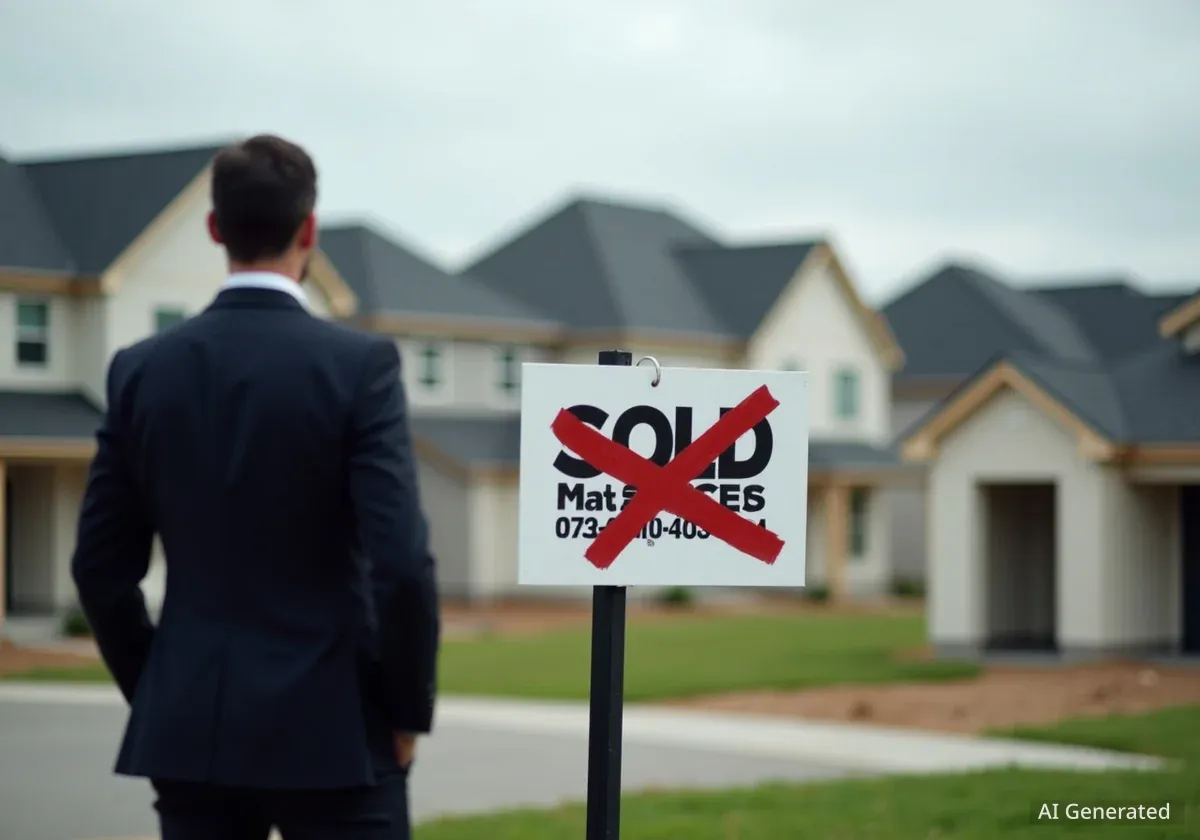D.R. Horton, the largest homebuilder in the United States, is increasing buyer incentives after reporting a decline in home sales and profits for its recent fiscal quarter. The company points to persistent affordability challenges and cautious consumer sentiment as key factors impacting demand in the housing market.
Financial results for the three months ending September 30 show a 1% drop in home closings and a significant 30.8% decrease in net income. This performance reflects a broader trend of homebuyers grappling with high prices and fluctuating interest rates, prompting the builder to rely more heavily on promotions to close deals.
Key Takeaways
- D.R. Horton's fourth-quarter revenue fell 3.2% to $9.7 billion, with net income dropping to $905 million.
- For the full fiscal year, home sales were down 5%, and net income decreased by approximately 25%.
- The company is using incentives like interest rate buydowns and closing cost assistance to combat buyer hesitancy.
- Executives expect to continue using elevated incentives into the next fiscal year, depending on market conditions.
Financial Headwinds Impact Performance
The Arlington-based builder's latest earnings report reveals the strain on its operations. For the fourth fiscal quarter, which concluded on September 30, revenue saw a 3.2% decline, settling at $9.7 billion. The impact on profitability was more pronounced, with net income falling by 30.8% to $905 million.
The number of homes closed during the quarter dipped by 1%, totaling 23,368. This slowdown contributed to a weaker performance for the entire fiscal year.
Fiscal Year in Review
For the full fiscal year ending September 30, D.R. Horton's revenue fell 6.9% to $34.25 billion. Net income for the year saw a substantial 25% drop, landing at $3.62 billion, while total home sales decreased by 5% to 84,863 units.
These figures underscore the challenges facing even the largest players in the residential construction industry as market dynamics shift.
The Central Role of Buyer Incentives
In response to the cooling demand, D.R. Horton has intensified its use of sales incentives. These promotions are designed to make homeownership more attainable for buyers who are struggling with the overall cost.
Common incentives include contributions to closing costs, free home upgrades, and, most significantly, interest rate buydowns. By temporarily or permanently lowering a buyer's mortgage rate, the company can directly address the primary concern for many: the monthly payment.
“I think for our buyer, again, it still comes back to the monthly payment. And the most attractive monthly payment we can put them in is with a lower rate,” CEO Paul Romanowski stated during the company's earnings call.
Romanowski acknowledged the company's strategy, noting, “We did lean into the incentives pretty hard in the quarter as we talked about and we expected to.”
A Market Defined by Affordability
The homebuilder’s strategy is a direct reaction to the national housing landscape. Despite some recent relief, affordability remains a major hurdle for prospective buyers across the country.
National Housing Costs
According to data from the U.S. Census Bureau and the Department of Housing and Urban Development, the median sales price for new houses nationally was $413,500 in August. This represents a 41% increase over the last decade, highlighting the long-term escalation in home values.
While home prices are a key part of the equation, borrowing costs have been the more volatile factor recently. The average interest rate on a 30-year fixed mortgage has seen significant swings, peaking near 8% in November 2023 before dropping to 6.26% more recently.
These fluctuations directly impact a buyer's purchasing power, making incentives that lower the interest rate particularly effective.
A Cautious Look Toward the Future
D.R. Horton's leadership does not expect these market pressures to disappear quickly. The company is preparing for a sustained period of using incentives to drive sales.
Executive Chairman David Auld commented on the outlook, signaling that the current strategy is likely to continue.
“New home demand is still being impacted by ongoing affordability constraints and cautious consumer sentiment, and we expect our sales incentives to remain elevated in fiscal 2026, the extent to which will depend on market conditions throughout the year,” Auld said in a statement.
The company's forecast suggests that while there is underlying demand for new homes, converting that demand into sales will require continued financial assistance to bridge the affordability gap for many American families.





